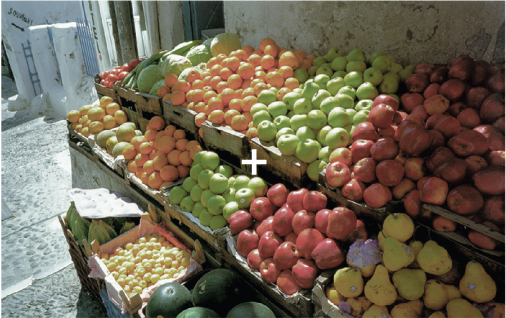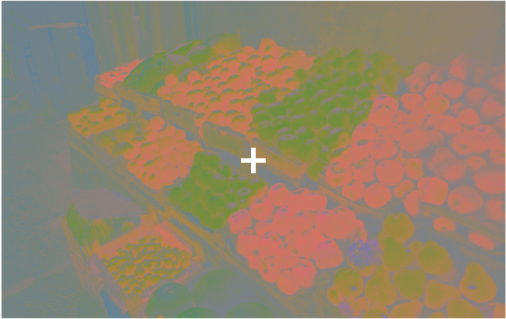





Based on parts of Figure 3.11.37 from Stockman, A., & Brainard, D. H. (2009). Color vision mechanisms. In M. Bass, C. DeCusatis, J. Enoch, V. Lakshminarayanan, G. Li, C. Macdonald, V. Mahajan & E. van Stryland (Eds.), The Optical Society of America Handbook of Optics, 3rd edition, Volume III: Vision and Vision Optics. New York: McGraw Hill.
Chromatic and achromatic contents. Three different images of a fruit stall are shown. The full color image (top) has been decomposed into its chromatic (middle) and luminance components (bottom). Notice that the details of the image are much better preserved in the luminance image than in the chromatic image. The chromatic information, although important for object discrimination and identification, is secondary to the perception of form. Colour fills-in the picture delineated by the luminance information as demonstrated here.